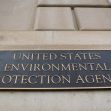When people hear the word “soot,” they most likely associate it with the black, sticky substances that coat fireplaces or barbeque grills when hearth-gathering or cooking activities are over. But “soot,” according to the Environmental Protection Agency (EPA), is much more than a nuisance that requires cleaning. It is a serious pollutant with harmful health effects that the EPA is proposing new standards to reduce.
Soot, more formally known as PM 2.5, is a shorthand term for “fine particle pollution.” It is released by construction, unpaved roads, and fields as well as smokestacks and fires. In addition, it enters the atmosphere from industries, power plants and vehicles that emit sulfur or nitrogen oxides. When breathed in, fine particles can penetrate the lungs and have been linked to many health hazards, especially in low-income communities and communities of color. These “vulnerable populations,” including children, the elderly, and those with asthma, heart, or lung conditions, are the ones that the EPA hopes to help with its new, stricter soot pollution standards.
The Los Angeles Times explains that “fine particulate” is a “catchall term for any airborne debris 2.5 micrograms or smaller.” Fine particles are “nearly 30 times smaller than the width of a human hair.” They are definitely not noticeable when breathed in. A UCLA researcher quoted in the Times article also noted that locations close to freeways “have the highest toxicity levels in general.”
To combat soot pollutants, the EPA is proposing a new national ambient air quality standard (NAAQS) that will reduce soot allowances from 12 micrograms per cubic meter to between 9 and 10. EPA Administrator Michael S. Regan submitted the Agency’s notice to the Federal Register on January 5. The new rule, if enacted, would reduce current national PM 2.5 standards by 17% to 25%.
The Executive Summary of the EPA’s proposal, officially titled “Reconsideration of the National Ambient Air Quality Standards for Particulate Matter,” is a 569-page document. It explains that the new standards replace current ones, which scientific evidence and technical information have found to be inadequate to protect public health. Recent findings support “a causal relationship between long-and short-term exposures and mortality” due to cardiovascular problems, cancer and adverse effects on the nervous system effects. Current evidence that prompted the new EPA proposal was gathered from “animal toxicological studies, controlled human exposure studies, and epidemiological studies.”
The EPA’s jurisdiction over pollution is found in the federal Clean Air Act, passed in 1970. The comprehensive law is the basis for NAAQS, which are designed to protect the public welfare and regulate emissions of hazardous air pollutants.
When announcing his Agency’s new standards proposal, Regan said, “Our work to deliver clean, breathable air for everyone is a top priority at EPA, and this proposal will help ensure that all communities, especially the most vulnerable among us, are protected from exposure to harmful pollution.
The press release from the EPA also quotes Dr. Doris Browne, the former president of the National Medical Association. Dr. Browne stated, “No one should be sickened by the environment they live in and EPA’s proposal marks the start of changes that will have lasting impacts in communities all over…Harmful air pollution can have lasting and devastating impacts on people’s health, but by strengthening air quality standards, we can ensure healthier, more sustainable communities across this country.”
EPA last reviewed PM 2.5 standards in 2012. Science has learned a great deal since then. The agency claims that the new standards, when enacted, will annually reduce over 4,200 “premature deaths,” eliminate 270,000 lost work days, and save over $43 billion in health costs.
Not everyone is happy about the new proposed regulations. The Times quotes a representative of the American Lung Association who said, “The EPA’s advisory committee made clear recommendations to the administrator. These independent experts recommended that the range for a national standard should be 8 to 10, rather than the 9 to 10 micrograms per cubic meter that are in the current proposal.”
The industry response is not currently available, but it would not be surprising to find EPA’s proposal unwelcome.
A preliminary version of the new EPA fine particle pollution proposal is currently available at: https://www.epa.gov/system/files/documents/2023-01/PM%20NAAQS%20NPRM%20-%20prepublication%20version%20for%20web.pdf. The official version will soon be on the Government Printing Office’s website. Public hearings will be held virtually.






